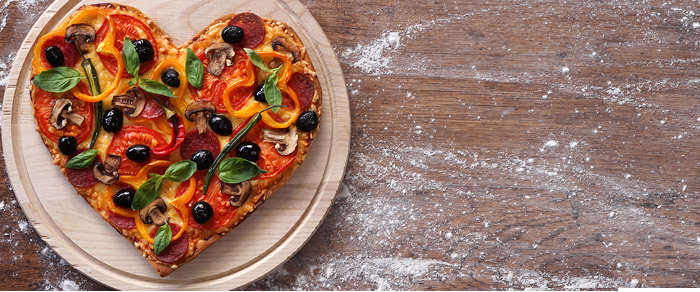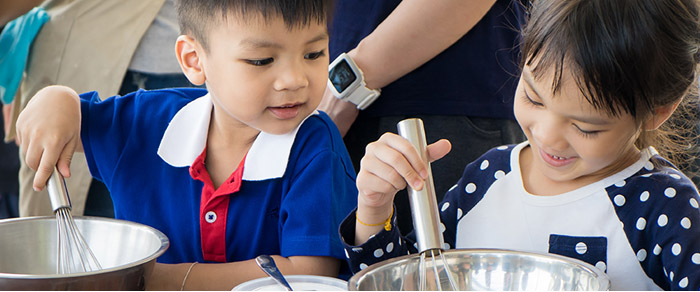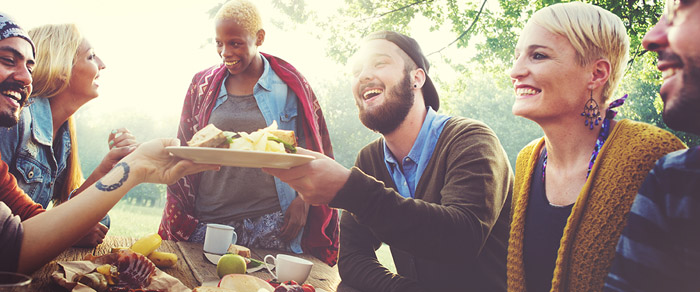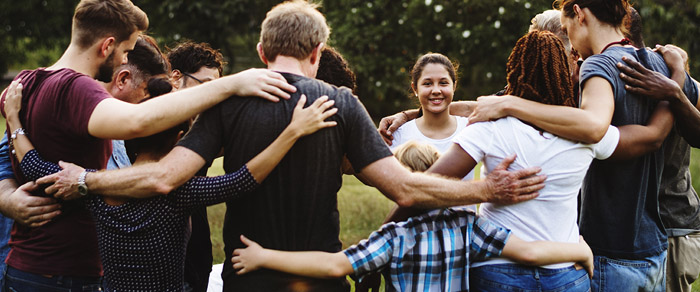Your Guide to Hosting a Community Dinner
How to Plan a Community Dinner
Let’s get started!
Prep Notes
Who?
The community is a key part of having a Community Dinner! Make sure to communicate early and often with the people you invite to your event. Sample invitations Send reminders so families don’t forget! Consider using email, Eventbrite or Facebook to make it easy and convenient. Make sure to have a plan for guests with food allergies or dietary restrictions
What?
Every TFDP Community Dinner follows a basic agenda of food, fun and conversation. Check out our sample agenda and use it as a guide for planning your dinner.
When and Where?
A Community Dinner doesn’t have to be a “dinner” at all; you could make it a breakfast or picnic lunch if that works best! Plan to have guests there for about 2 hours.If you don’t have a space already in mind for your event, check out our tips for finding the best location for your TFDP Community Dinner.
How?
We’ve got all the resources you need to help you pull off a great event! Community Dinner Checklist: All your to-dos, with a helpful timeline to keep you on track! Set-up Guide: Your list of important supplies and organizing tips to get your space ready for the main event. Forms For Your Function: Important fdocuments you’ll need when your guests arrive.
Food
 It’s the first ingredient in food, fun and conversation — but what should you serve? How much do you need? And what will it cost? Don’t worry: A memorable event can happen at any price point. We’ve included a helpful budget breakdown that can help you plan for expenses, but remember — there are always options that can help you lower costs!
It’s the first ingredient in food, fun and conversation — but what should you serve? How much do you need? And what will it cost? Don’t worry: A memorable event can happen at any price point. We’ve included a helpful budget breakdown that can help you plan for expenses, but remember — there are always options that can help you lower costs!
Low-Budget Tips and Tricks
- Try a potluck! Whether you ask everyone attending to bring a dish to contribute to the meal, or you provide a main dish item for everyone and ask families to round out the dinner with paper goods, beverages and side dishes, a potluck model is a smart way to work within a limited budget.
- Ask for donations. Local grocery stores, community gardens, restaurants, farms and other food producers are often willing to provide food. You may be able to get part or all of your meal provided if you ask around!
What you choose to serve will depend on your budget, food preferences and the limitations of your space. Start by choosing the statement(s) below that most closely match your needs, then click the links to explore the possibilities!
Fun
 Fun might be the most important ingredient for a successful Community Dinner! Food brings people to the table, but fun is the thing that keeps them there — and makes them want to share a meal with others again and again. To keep the fun flowing:
Fun might be the most important ingredient for a successful Community Dinner! Food brings people to the table, but fun is the thing that keeps them there — and makes them want to share a meal with others again and again. To keep the fun flowing:
- Before the meal: Select one or two Appetizer Activities to have available for families to enjoy while your guests are gathering.
- During the meal: Print these simple table games and put them on the tables, so families can try them out during your event
- After the meal: Choose a few group games that you’ll play with the children while adults are engaging in a grownups-only discussion
TFDP Favorite: Two Truths and a Tall Tale Ask everyone in the group to say three things about themselves: two true things and one thing that’s made up. The rest of the table will guess which is the tall tale!
Conversation
 “Help…What do we talk about?” As anyone who’s ever struggled with “How was your day?…Fine…” knows, conversation starters are a crucial part of setting the scene for a great shared meal. Keep the awkward silences and one-word answers at bay:
“Help…What do we talk about?” As anyone who’s ever struggled with “How was your day?…Fine…” knows, conversation starters are a crucial part of setting the scene for a great shared meal. Keep the awkward silences and one-word answers at bay:
- Print these suggested conversation starters and place them in jars on the dining tables
- Encourage people to get to know each other better through interviews! Print and distribute these interview sheets, or set the tables with interview placemats before guests arrive.
- Send families home with more conversation ideas! Consider having some Recipe for Conversation cards available for take-home use.
TFDP Favorite: If you could have any superpower, what would it be?
Enjoy and Share!
 To make sure you enjoy the event as much as your guests, it’s smart to enlist some help! Try to make sure you have someone available to fill each of these roles:
To make sure you enjoy the event as much as your guests, it’s smart to enlist some help! Try to make sure you have someone available to fill each of these roles:
Greeter
This person (or people) runs your welcome table and makes sure all the photo releases and sign-in sheets are filled out, families have nametags and everyone knows where to go when they arrive.
Facilitator
This is usually the host (that’s you!). The facilitator keeps the event moving on schedule and runs the facilitated discussion portion of the evening. Make sure to check out our Discussion and Facilitation Tips!
Kid Wrangler
This person (or people, depending on the number and ages of the children) is in charge of entertaining the kids while the adults are having their discussion. They’ll be responsible for group games and the dessert activity.
Food Helpers
These are the people who will help you prepare and set out your food.
Photographer
Don’t forget to take photos! Designating one or two people to get some shots of your event is a good way to make sure you don’t get too busy to document your dinner. (But remember: Before sharing on social media, make sure you’ve got signed photo releases!)
Photography Tips We love to get pictures from TFDP Community Dinners! When taking photos, it’s a good idea to try and capture special moments and details. Some of our best pictures have been of:
Food. Whether it’s pictures of the dinner itself or images of your guests making an appetizer, food photography is a great way to showcase the dinner.
Fun. Great shots of families having fun together is always a good way to share highlights from your event.
Conversation. Shots of the notes from the discussion, or images of parents engaged in lively conversation are a really helpful way to share the impact of the evening.
The details. Activities, set-ups, handmade signs and any details that make your Community Dinner uniquely yours!
Clean-up Crew
Don’t let everyone leave a mess for you to deal with! Make sure you have a few people who are planning to stay after the event to help you clean up the space. (Even better: ask folks to help throughout the evening to minimize clean up at the end!)
 Social Media Sharing Tips
Social Media Sharing Tips
We love to see organizations sharing about their TFDP Community Dinners! Here are some top do’s and don’ts to help you share well:
DO:
Tag TFDP, so we can see what you’ve shared! Facebook: @TheFamilyDinnerProject; Twitter: @FDP_Tweets Share photos as long as you’ve got photo releases Share before, during and after your event
DON’T:
Use names or identifying characteristics of people who attend your event Share photos of people without their consent Share the negatives! Keep your social sharing fun and positive, just like your Community Dinner!
Digest
 After a great meal, it’s always important to take some time to let everything settle! Follow up on your Community Dinner within a week of the event:
After a great meal, it’s always important to take some time to let everything settle! Follow up on your Community Dinner within a week of the event:
- Let us know how it went! Send your sign-in sheets and a final attendance count to TFDP so we can keep track of how many families have enjoyed food, fun and conversation at Community Dinners around the world.
- Thank your guests. Send everyone a follow-up email to let them know how much you appreciated their attendance, and to give them some options for connecting with TFDP and our online resources so they can keep working towards their family dinner goals. We’ve provided a sample email you can use.
- Consider doing it again! If you enjoyed your Community Dinner, you might want to host another in the future. Check out our special theme dinners to put a new twist on your food, fun and conversation for next time!
Thank you for hosting a TFDP Community Dinner! People like you who spread our mission through events in their own communities are vital to the work we do. If you have any questions about the contents of this guide, or about The Family Dinner Project and our work, please contact us.
